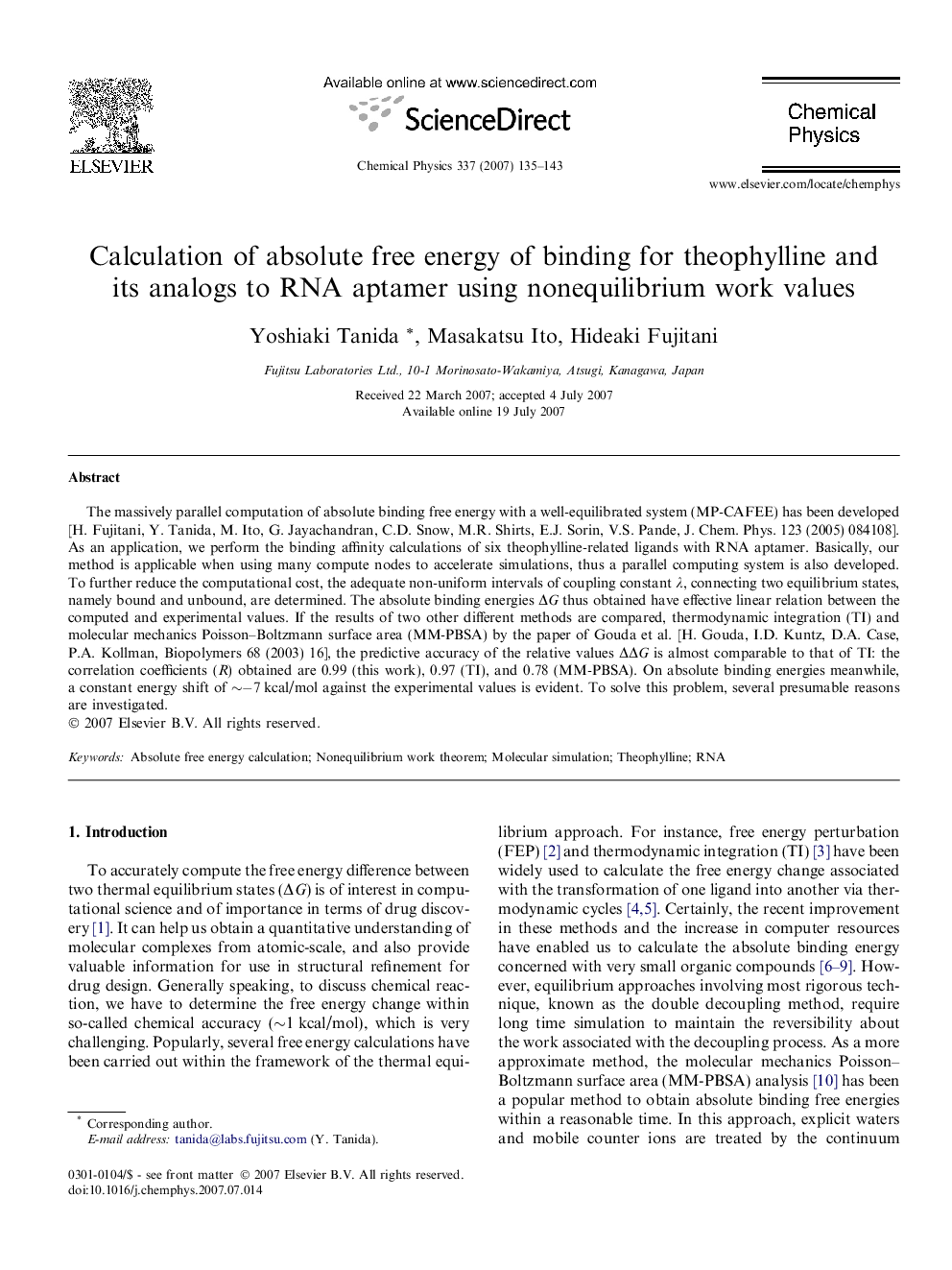| Article ID | Journal | Published Year | Pages | File Type |
|---|---|---|---|---|
| 5376442 | Chemical Physics | 2007 | 9 Pages |
Abstract
The massively parallel computation of absolute binding free energy with a well-equilibrated system (MP-CAFEE) has been developed [H. Fujitani, Y. Tanida, M. Ito, G. Jayachandran, C.D. Snow, M.R. Shirts, E.J. Sorin, V.S. Pande, J. Chem. Phys. 123 (2005) 084108]. As an application, we perform the binding affinity calculations of six theophylline-related ligands with RNA aptamer. Basically, our method is applicable when using many compute nodes to accelerate simulations, thus a parallel computing system is also developed. To further reduce the computational cost, the adequate non-uniform intervals of coupling constant λ, connecting two equilibrium states, namely bound and unbound, are determined. The absolute binding energies ÎG thus obtained have effective linear relation between the computed and experimental values. If the results of two other different methods are compared, thermodynamic integration (TI) and molecular mechanics Poisson-Boltzmann surface area (MM-PBSA) by the paper of Gouda et al. [H. Gouda, I.D. Kuntz, D.A. Case, P.A. Kollman, Biopolymers 68 (2003) 16], the predictive accuracy of the relative values ÎÎG is almost comparable to that of TI: the correlation coefficients (R) obtained are 0.99 (this work), 0.97 (TI), and 0.78 (MM-PBSA). On absolute binding energies meanwhile, a constant energy shift of â¼â7 kcal/mol against the experimental values is evident. To solve this problem, several presumable reasons are investigated.
Keywords
Related Topics
Physical Sciences and Engineering
Chemistry
Physical and Theoretical Chemistry
Authors
Yoshiaki Tanida, Masakatsu Ito, Hideaki Fujitani,
